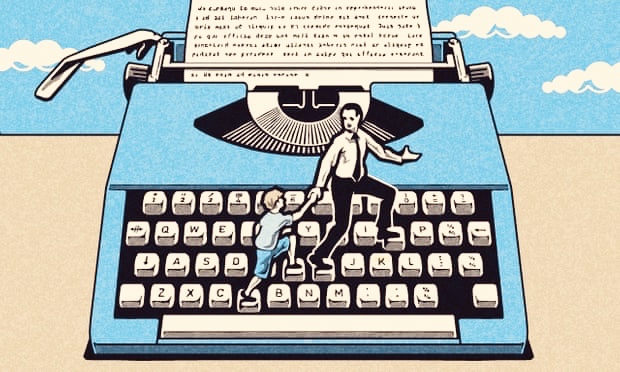sans serif records with regret the passing away of Tehelka photographer Tarun Sehrawat after contracting malaria while working on a story in the Maoist-controlled areas of Chhattisgarh. He was 22 years old.
***
The Hindu‘s Aman Sethi pays tribute:
“Today, when one of our own has been irrevocably lost, I feel we — as reporters, photographers and editors — must turn our gaze inwards and ask ourselves why a 22-year-old photographer with access to the best health care in the country, was claimed by a disease that was demystified in 1897….
“India’s journalists tend to nurse a healthy disregard for institutionalised frameworks, arguing that it is impossible to take all risks into account. But a few basic measures could help eliminate entirely predictable and avoidable tragedies like the one that claimed Tarun.
“It is the responsibility of senior editors to assess the risks that junior, inexperienced journalists take in search of a story. It isn’t enough to tell a 22-year- old like Tarun to ‘Be Careful.’ An organisation should be in a position to direct its journalists to information on possible health hazards and the corresponding vaccinations, inoculations and precautions.
“Reporters working out of conflict zones need specific training; all of us in Chhattisgarh operate in the hope that “everything will be okay,” but sometimes that isn’t enough.”
Read the full article: Remembering Tarun
Also read: Salute to a friend and colleague









Why can’t we appreciate Tehelka’s greatness here? Is there any other organisation whose photographer has given his life covering a pathbreaking story on the Nakshals? Is there any Indian media organisation whose editor once faced an assassination threat?
Aman Sethi has said what many have felt from the time they heard about Tarun Sherawat’s illness. There is nothing great about a paper that does not help its reporters return safe from an assignment. Tehelka carried a long hand wringing editorial some time ago that was full of fine sentiment, but all it did was romanticise the situation in a manner that allowed it to escape respopnsibility!
@Jena and @alamelu – If you actually read the whole article in ‘The Hindu’, you’ll find that it doesn’t finger-point or attack Tehelka. Rather, Aman was conveying a general plea that all news organizations needed to better educate and equip their journalists …
may he rest in peace n god give strength to his loved ones in this difficult time. but want to ask some thing when one who in ur fraternity is gone can now u ask his parents how do they feel. some bastard media persons asking the parents of girl who got raped or someone who died that how they feel
Neha Dixit in The Hoot:
http://thehoot.org/web/home/story.php?storyid=6024&mod=1&pg=1§ionId=19&valid=true
Excerpt: “With Tarun’s death a can of worms has opened. While some of us have expressed our discomfitures in proxy words at his cremation ceremony and prayer meeting, some have sat in coffee shops and vented their anger and grief secretly. All those who have known Tarun closely are moving around with ‘Somebody must do something about it’ written all over our faces. But we are scared. Some, because of what we owe to Tehelka in terms of loyalty for giving us the opportunity to do the reports we wanted to so early in our careers and some because we have grown so used to the callousness of media organisations that it almost seems like discussing what is common knowledge and banal.”
***
As always, Shoma Chaudhury cuts the editor’s cut to the chase in her Searing prose, bringing us the Heart of the Matter:
“Ranbir Bhaiya was once a driver. In the dark years of TEHELKA’s history, while an assassination threat hung over TEHELKA Editor Tarun Tejpal, it was Ranbir who escorted his daughters to school and back, his tall strapping loyalty a greater source of comfort than any police detail could have been. When Ranbir’s own sons came of age, they were absorbed into TEHELKA. Polished young men, they were not just the promise of the father’s life; they embody the promise of human capacity. Arun Sehrawat, tall, good-looking, works in TEHELKA’s IT department; Tarun Sehrawat, fearless and very gifted, was our staff photographer.”
http://www.tehelka.com/story_main53.asp?filename=Ws130612Editor_Cut.asp
Did we really need to know Ranbir Bhaiyya was a a driver? Does Ranbir Bhaiyya have a surname, an identity of hisw own apart from being Shoma Didi’s brother?
No, that is not the point. The point is that the Editor’s Cut wants to tell us how much it has done for a whole family. So much that they will not question Tehelka’s responsibility in Sehrawat’s death. They are totally dependent on Tarun Tejpal’s mercy and can’t afford to show anything but utmost family loyalty. Let’s spare a thought for Ranbir Bhaiyya, and also for Shoma Chaudhury, because it must be pathetic to be her.
***
Look at Shoma Chaudhury staring soullessly at you on Tehelka.com’s homepage. Makes you want to vomit! Even in the page linked on the above comment, Sehrawat’s big photo was placed later. It earlier had a large model-like photo of the Searing Prose Writing Editor.
As on this page:
http://www.tehelka.com/story_main52.asp?filename=Op260512Living.asp
Except from the Editor’s Searing Prose: “At one level, this is a glorious story of courage and commitment. Two weeks ago, these reporters had gone into Abujmarh, the unbreached citadel of the Maoists, walking 40 km on foot into remote and hostile terrain. They had nothing but a few bottles of drinking water and some packets of biscuits. But they refused to turn back when water and food ran out. They refused to turn back even when they saw notices from the Maoists warning of mines and traps ahead. They wanted to bring back first-hand accounts of life in the villages there and they stayed their course till they got the story they wanted.”
It’s clear – Tehelka’s obsession with self-glorification killed a young man.
“When he was clutching on to life in a Gurgaon hospital, one of his editors wrote a piece about the courage it takes to go to Abujhmaad to chronicle the lives of Adivasis there who lead a hellish life. It spoke of how Tarun Sehrawat and his reporter colleague walked 40 km in a hostile territory with no access to safe drinking water. It glorified the fact that the duo did not turn back once they ran out of the little water and food they were carrying. The editor also wrote, almost approvingly, of how the two had slept in the open, with ‘no protection from insects’. Last week, when it became certain that Tarun won’t survive, the editor wrote another piece, this time on the ‘dignity and impenetrable grace’ of the young man’s father and how he had authorised a biopsy to enable the doctors to ‘increase their understanding’.
As someone who has reported extensively from central and east India—the region we know as the ‘Red Corridor’—such pieces make me really angry, especially when an editor writes them. First of all, there is no glory in dying like this. There is no glory in persisting when your water has been exhausted and you are not even carrying chlorine tablets that weigh just 20 gm.”
Rahul Pandita in Open magazine – http://www.openthemagazine.com/article/nation/abujhmaad-is-not-alibaug
Is it worth it? Ms. Chaudhury is shaken by Mr. Sehrawat’s death, but said: “Journalists take risks all the time. Ultimately, each situation demands decisions made on ground and calculated risks taken. The rest is just codes for comfort.”
http://india.blogs.nytimes.com/2012/06/21/37179/
Interesting pattern emerging here – the critics of Tehelka trying to turn this tragedy into a tirade against Tehelka …
sleep well.